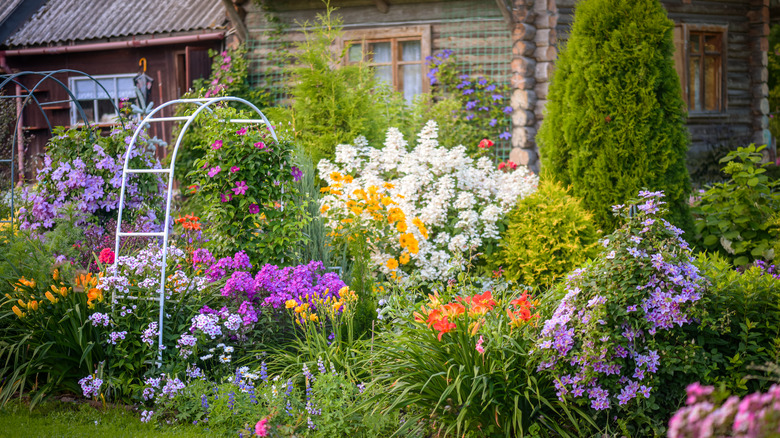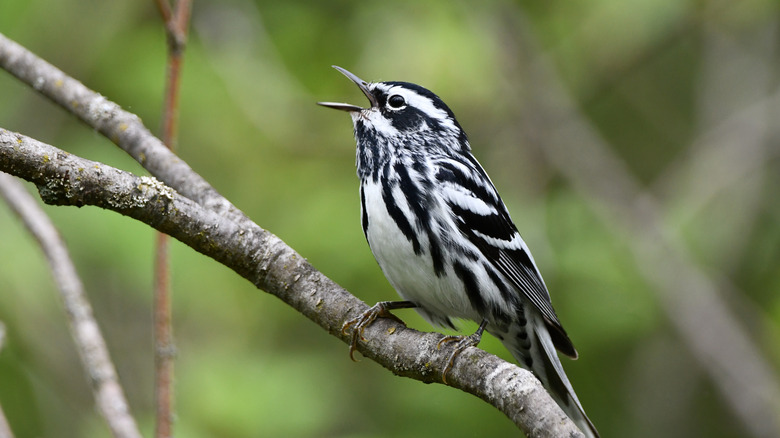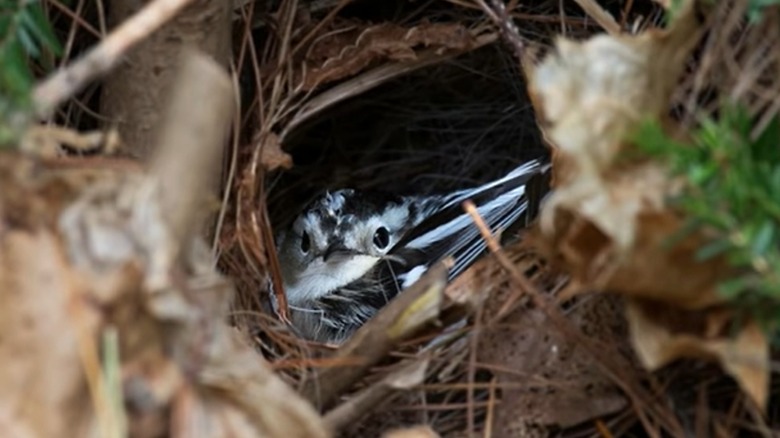Tricks You Should Use To Attract This Stunning Black-And-White Bird To Your Yard
They may have sparked some ornithophobia decades ago, thanks to Alfred Hitchcock's 1963 horror film, but many nature enthusiasts and animal lovers today see birds as beautiful, graceful creatures. Thousands of homeowners add feeders to their gardens to attract them to their yards. Hummingbirds are a popular target, but there's another species that's just as charming to watch: the black-and-white warbler. If you want to see one visiting your turf on the regular, plant woody foliage in your yard (if you don't already have some), create an ample food source, and provide nesting materials or areas for them.
The warbler is a small songbird (yes, they sing!) family consisting of hundreds of species, including the black-and-white striped warbler. At approximately 4.5 inches long, these critters weigh less than an ounce, which is about the weight of a wooden pencil. Black-and-white warblers commonly breed in Canada and most of the eastern United States. The cold winter temperatures drive them to migrate to the south toward Florida, southern Texas, the Caribbean, and most of Central America.
Create an ample food source
As with many other small birds, black-and-white warblers' diet consists primarily of insects, so if you create a habitat that attracts the prey, you'll attract the predator. The more trees and foliage you have in your yard, the more likely you are to have insects. Black-and-white warblers are known to walk up and down tree trunks and along limbs and branches in search of bugs hidden under the bark, so having several trees in your yard might be enough to lure them in. You can purchase large potted plants or small trees for your yard at your local nursery, as long as they have plenty of branches for insects to climb.
In addition to using foliage to attract black-and-white warblers, you can simply add more of their food source to your yard: insects! These songbirds commonly feast on larvae, caterpillars, beetles, and spiders. This doesn't necessarily mean you have to spend the day in the woods collecting these critters. Instead, you can buy mealworms and add them to your soil. You can find containers of mealworms at pet stores, department stores, and home and garden stores. You can also attract worms to your garden with organic mulch.
Create nesting areas or provide nesting materials
Female black-and-white warblers typically nest under shrubs or bushes, or other shrouded areas on the ground. If you provide plenty of hiding spots for these birds, it can increase the chances of seeing them visit your yard. You can also create a one-stop shop for their nesting materials. They usually use bark strips, grass, dry leaves, moss, and similar items for their cup-like nests. Leaving piles of these items on the ground or tucked away in branches can draw them in and give them a reason to come back.
Black-and-white warblers begin building their nests as early as April, so it's best to ensure there are nesting spots or materials — or both — available for them weeks before then. With plenty of nesting materials and hiding spots, combined with plenty of insects and insect hiding spots, you'll increase the chances of seeing black-and-white warblers on your property. That is, if you live in an area where they commonly fly.


